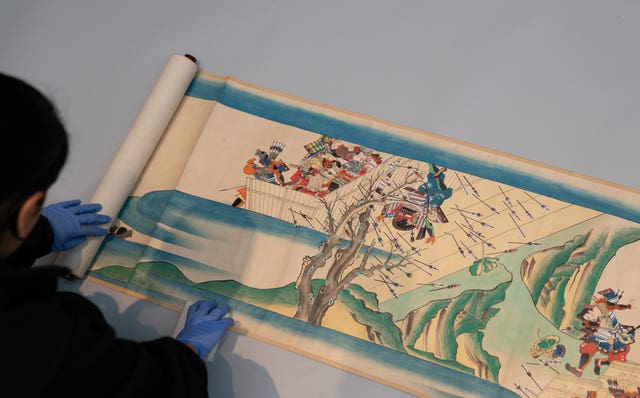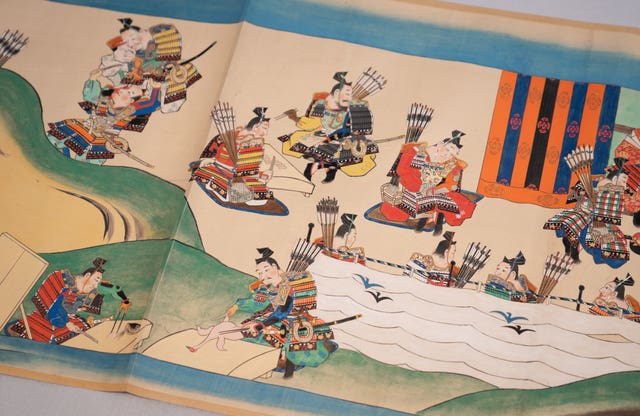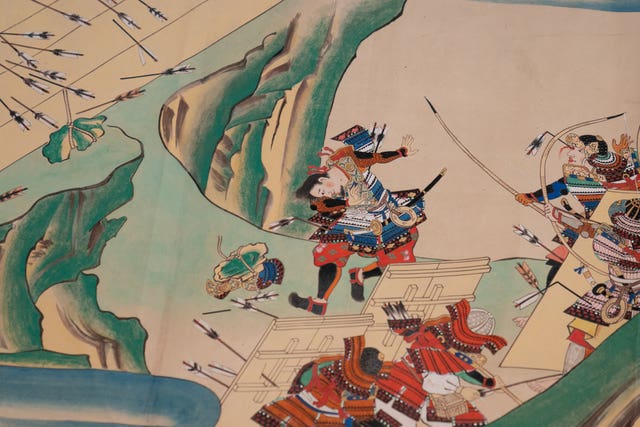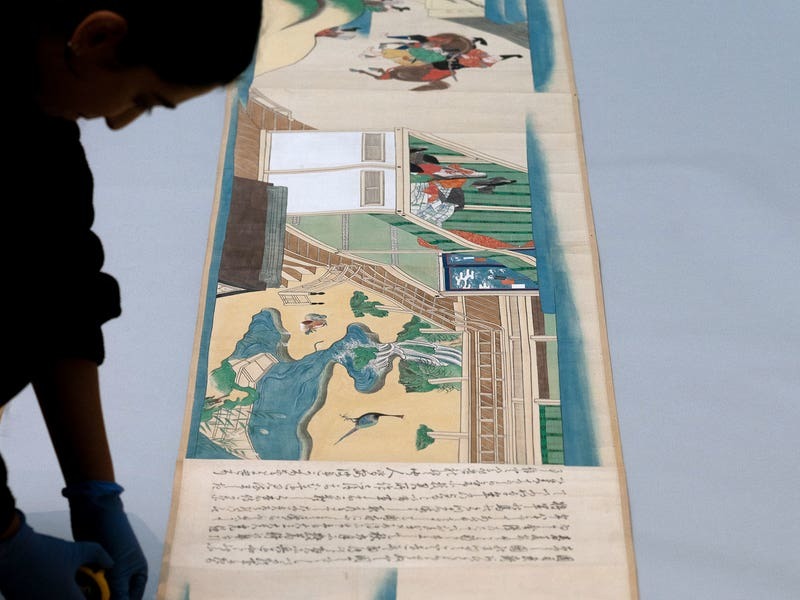An exquisitely detailed Japanese scroll depicting Samurai warriors in battle and measuring 15 metres in length is among thousands of museum exhibits being catalogued as part of an exhaustive inventory.
The process which involves at least 27,000 works is currently ongoing at Birmingham Museum & Art Gallery.
The museum is currently closed to the public for essential works, with thousands of paintings and historical objects being packed and moved off site.

The scrolls are so large that curators have had to use one of the main gallery rooms just to get a proper look at the unusual works, which are also covered in beautiful Japanese calligraphy.
Ayesha Hussain, a museum collections digitisation assistant, said: “The inventory and digitisation process is a case of getting all the objects out, one at a time, doing a little research about them, and photographing them.
“It came about as a project to inventory all the works on paper in our collection, which is something above 20,000 works.”
The project started in 2018 but has overlapped with vital museum refurbishment works, meaning the process must be completed by March 2022 – ahead of the city’s Commonwealth Games.
Ms Hussain said there was “limited information on the scrolls”, of which there are about 40, with staff even initially unaware of just how long they would be until the process of carefully unrolling them began.

The museum’s scroll is a fine copy of the original, which is still in Japan, but its age remains a mystery. A previous museum inventory register proves it was catalogued in the 1970s while it could date to at least the 1920s.
The large scroll, probably created with watercolours, contains many interesting scenes, depicting warriors – each one individual and distinct with facial features including beards and moustaches, and colourful suits of armour – in battle or at rest.
However, the scenes are characterised with features including finely detailed birds which can be seen arcing in flight above many of the battle scenes.
In another vividly coloured image, a man can be seen leading his horse while nearby archers take aim, while one scene shows a group of women in a house, surrounded by an ornamental pool.
Ms Hussain said one area of the scroll which had piqued her interest was one showing soldiers in camp, peacefully preparing food, while a neighbouring scene shows a brutal battle taking place – including a soldier taking an arrow to the eye.

David Rowan, museum photographer at Birmingham Museum’s Trust, said: “As part of the digitisation of 27,000 or more objects, we’ve the task of photographing these 15-metre Japanese scrolls, with some Chinese scrolls as well.
“The 15-metre ones are the largest we are working on.
“We are photographing, unrolling, condition-checking and measuring them in 28 sections, that will then be stitched together digitally, later on, to make one enormous image.”
He added his role was “thrilling” as it gave him the “privilege” to work with items which, for practical reasons, have only perhaps ever been seen “once or twice” in many decades.
It takes a full day to photograph and digitise the 15-metre scrolls, of which there are four in the museum inventory.
The museum is planned for partial reopening in spring 2022.






